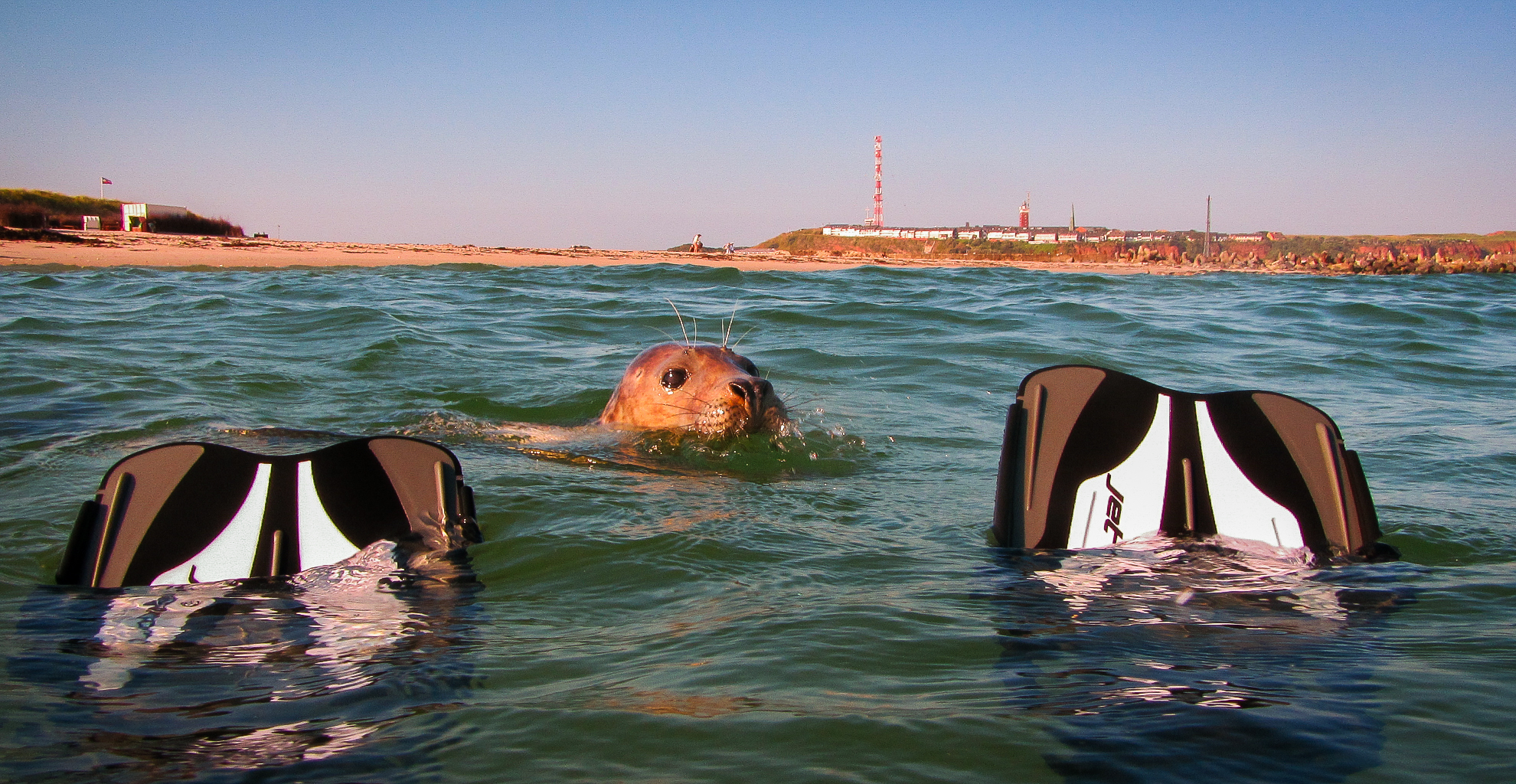Grey seals on Heligoland
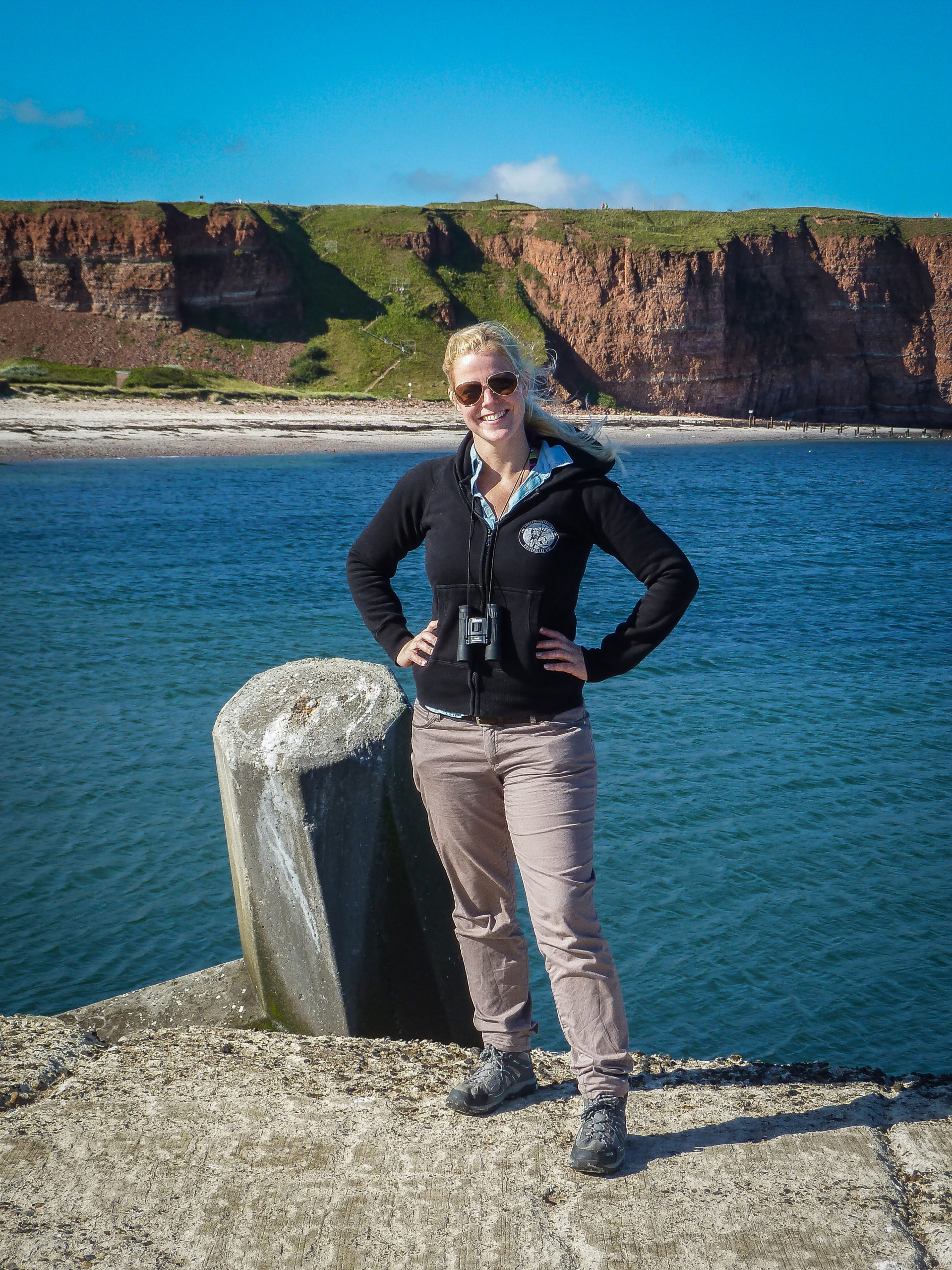
Howdy Seals!
Can you think of at least one thing seals and torpedo bomber have in common? What do you think is on the menu of Germany's biggest predator? Well, keep reading, I will answer the questions in a minute.
After finishing my Bachelor degree and the overall paperwork back in 2014, I finally was ready to get back to my sorely missed Outdoor life. I stuffed my backpack with a tent, sleeping bag, wetsuit, snorkeling equipment and my cameras with enough memory cards and took the ferry directly to Heligoland (German: Helgoland), a small offshore island in the North Sea.
Heligoland is known for its numerous breeding colonies of gannets and guillemots but also as habitat for Grey seals and Harbour seals. After pitching up my tent between the dunes, I walked to the beach with my snorkeling and camera gear, ready to jump into the ocean. It was such a unique feeling to see the heads of the seals sticking curiously out of the water to have a quick look at the new guest. During the day I went snorkeling up and down the coast of the North beach of Heligoland dune for a few times. The seals kept watching me from distance.
WARNING! There are unpredictable underwater currents in the North Sea, which can be dangerous when you cannot swim good enough. Stay within the guarded area (German Lifeguard Association DLRG). Please act responsibly for your own safety! Always!
ATTENTION! Next to that it is highly recommended that you follow the given rules to protect the seals but also yourself. This means “DO NOT TOUCH” and “KEEP YOUR DISTANCE” to the animals. In this case at least 30 m. You should stick to that! On the one hand, you do not want to injure or disturb the animals unnecessarily. Especially at mating and breeding season this is quite dangerous. On the other hand, seals simply are predators with razor-sharp, conical teeth. A bite would not only be painful, it would need to be treated immediately by a doctor. The affected wound would have to be cleaned and the surrounding healthy tissue to be removed to prevent inflammation. Afterwards the whole thing has to be sewn for the general healing process, including taking antibiotics, which all in all takes a while. Just keep that in mind!
Let's get back to the seals. In terms of shape, Grey seals (Halichoerus grypus) resemble the Harbour seals (Phoca vitulina), but are visibly larger and more stately and powerfully built. The head is conical and tapering to a point, the nostrils run parallel from above to the tip. The body color varies from light grey and beige to dark brown or even black with irregular spots. The females reach a total length of up to 2 m and a weight of up to 180 kg (approx. 440 lbs), while males with a size of up to 2.3 m and a maximum weight of up to 300 kg (approx. 660 lbs) are considerably heavier, which makes them the biggest predator in Germany. They feed on diverse fish species such as herring, cod and flatfish but also on crabs, lobsters and skates. Recent studies from Germany, Scotland and the Netherlands figured out that Grey seals also hunt for small Harbour seals and Harbour porpoises. As I mentioned, watch out for this top predator!
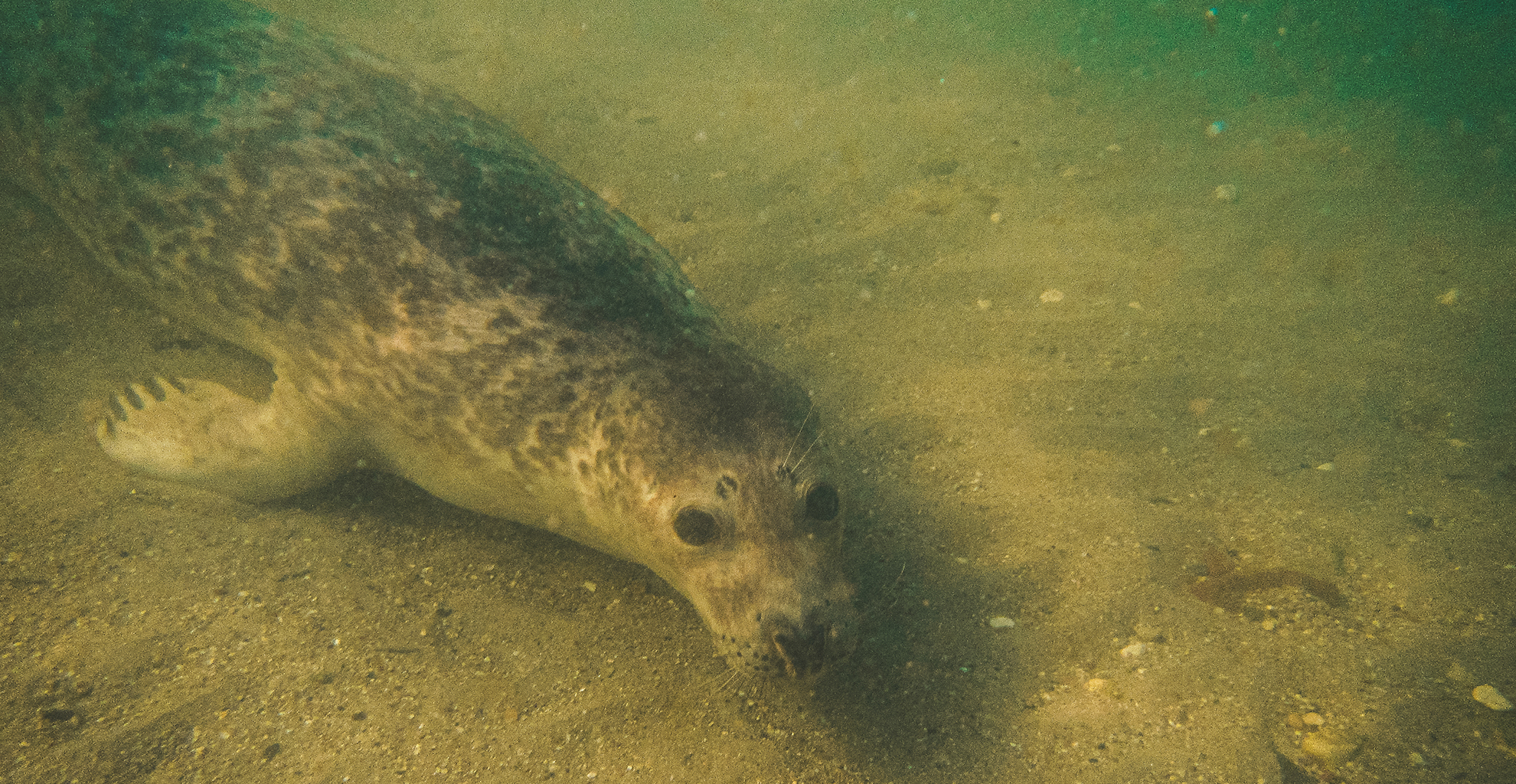
The seals continued to watch me, but instinctively within their safety zone. However, they must have asked themselves who is swimming in the water, making strange blow-out noises with the snorkel and wearing a weird mask to be able to see better underwater. On land, nearsighted and rather concentrated on large, fast-moving objects, the seals' spherical eyes are optimally adapted for seeing underwater. Grey seals and Harbour seals belong to the family of Phocidae. They are equipped with „a built-in rear-wheel drive“, how I like to call it. This means they move forward with the rear fins, unlike sea lions, which belong the Otarridae family and use their long forefins to get forward. With the exception of the leopard seal, which also belongs to the family of Phocidae but, due to its size, use the front fins as well. Two females whooshed past me and directly made closer rounds to inspect me. A bull was swimming nearby to make sure that "they just take a look". He was watching us the whole time, anytime ready to protect his ladies but actually acted like a chilling dude in the background.
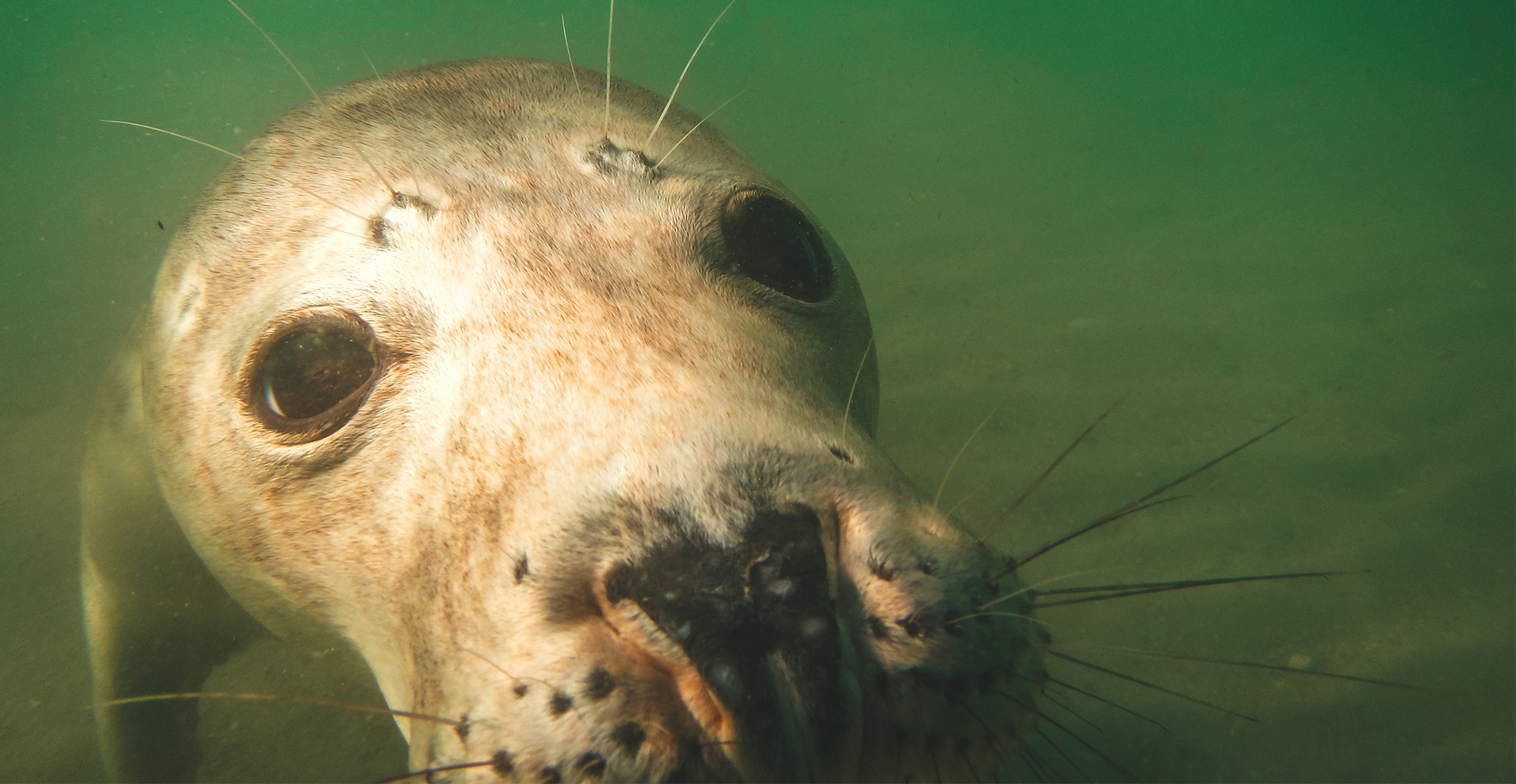
Suddenly and unexpectedly I was tapped briefly with the snout from behind. I slowly turned around, a young female around 3-4 years old, estimated by her body size, stared at me, looked confused and vanished within a second. To be conscious that I would never be able to keep up with their speed, I had fun swimming as fast as my human body could manage in the opposite direction, to make her following me, not to act like prey to make that clear at this point. The juvenile seal, whom I secretly named "Honey", followed me and dived playfully (with her personal safety distance) belly to belly below me.
Due to their torpedo-shaped body, they are perfectly adapted to the underwater environment, which anwers the question from the beginning. With its streamlined shapes Grey seals can reach speed limits up to 30 km/h (approx. 18-19 mph). The limbs have been converted into fins, the nose and ear openings can be closed before diving and they can hold their breath for up to 30 minutes. To do this, they reduce their heartbeat to save oxygen. When diving, they do not take a deep breath, they rather exhale and let them fall until the desired depth is reached. This saves energy, which they better use for hunting strategies. Marine mammals also have high levels of hemoglobin in their blood to store oxygen as a reserve.
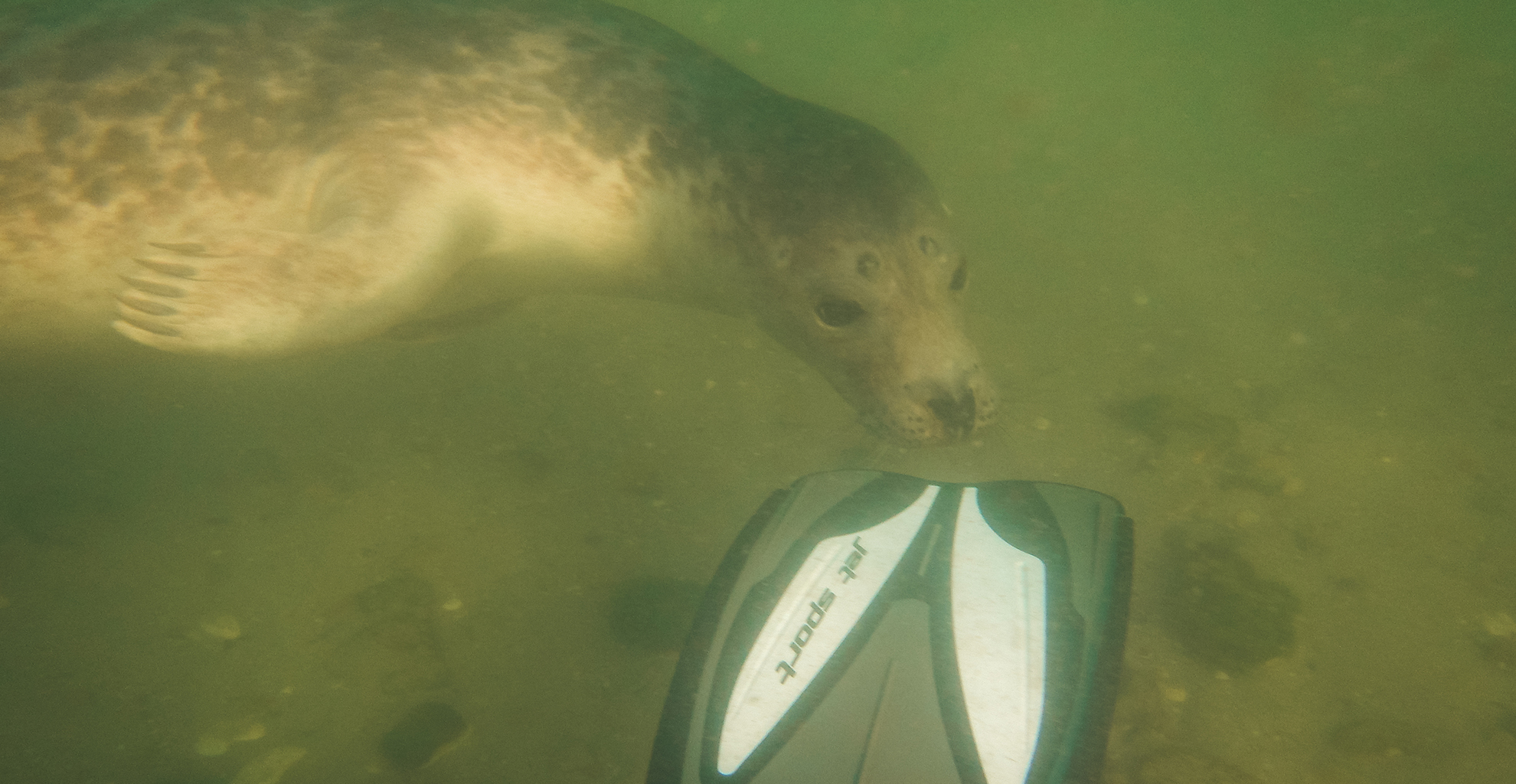
For me it is very important to mention that the seals were near me at its own free will. At no point I was swimming in their direction. When they had no fun anymore hanging around with a human being, they simply disappeared. So in case you would like to make a similar experience, do not expect that the same thing will happen to you. On my first day I was snorkeling in their habitat and they just took a quick look and kept doing their own business. A tourist told me that the animals often watch her swimming but never come closer to her. She was pretty sure that she got recognised by her swimming cap and was already happy about it. In my case I had the pleasure to meet young, curious and playful seals who wanted to get to know me better. What you definately need to know is that you better do not try this with newborns. When you come too close to a mothers baby, I do not want to witness what might happen next. A massive bull who will always protect his harem, which consist of up to six females included.
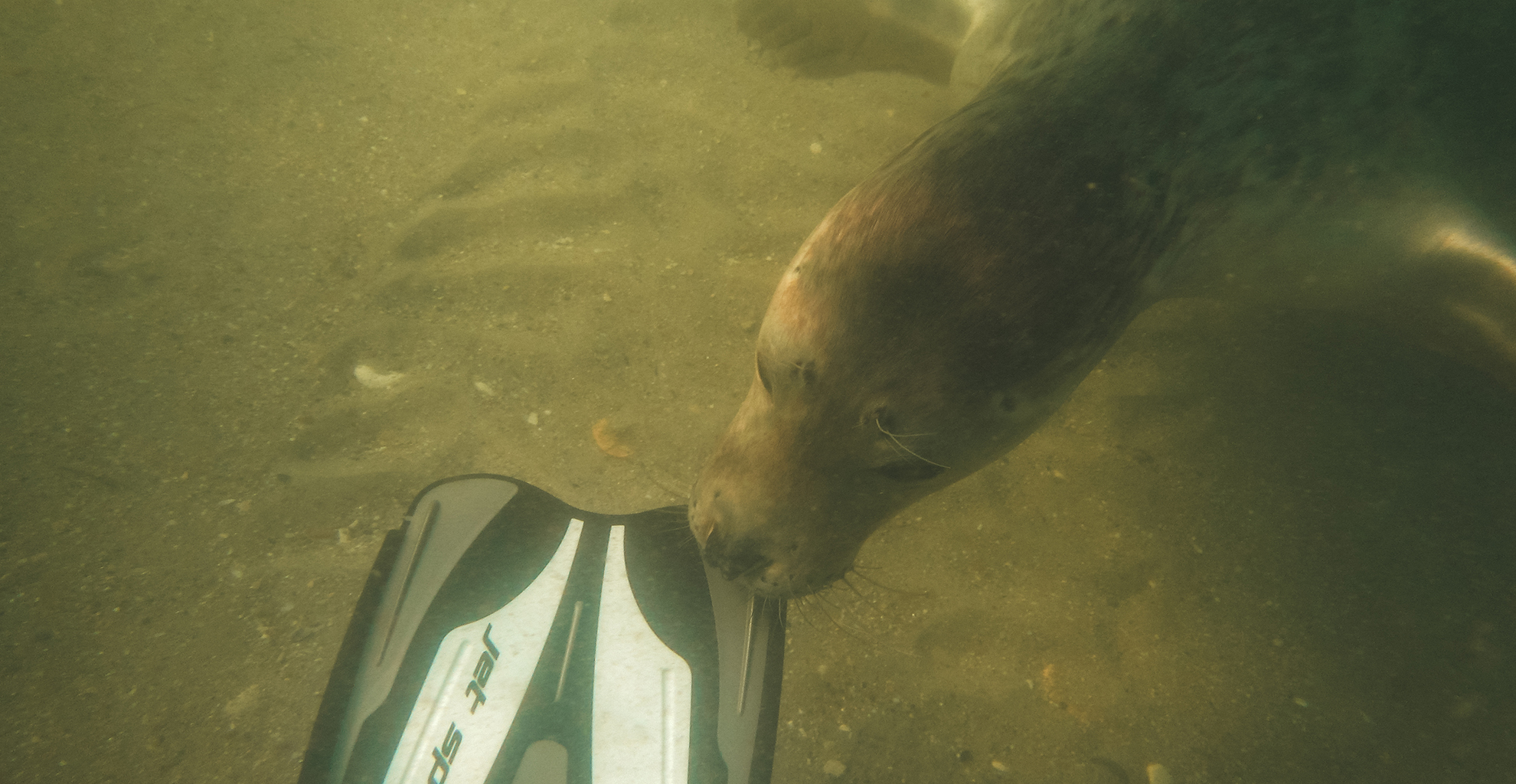
Honey was very impressed by my fins and she kept enjoying and playing with them. She also took a careful bite wondering about the strange material! Seals playfully bite each other's fins but also to reprimand and warning each other. In serious and territorial fights males bite each other into its necks which causes bad injuries. The mutual respect, which in my opinion are also given by animals towards humans, made it a very special experience. For me it was an incredible feeling to get so close to a wild and free animal, always at its own will, on both sides. I would have liked to stay longer but I will definitely return to this wonderful wild place. Hopefully I will be recognised by Honey like the swimmer lady with her swimming cap. Maybe because of my fins? Well, let’s see!
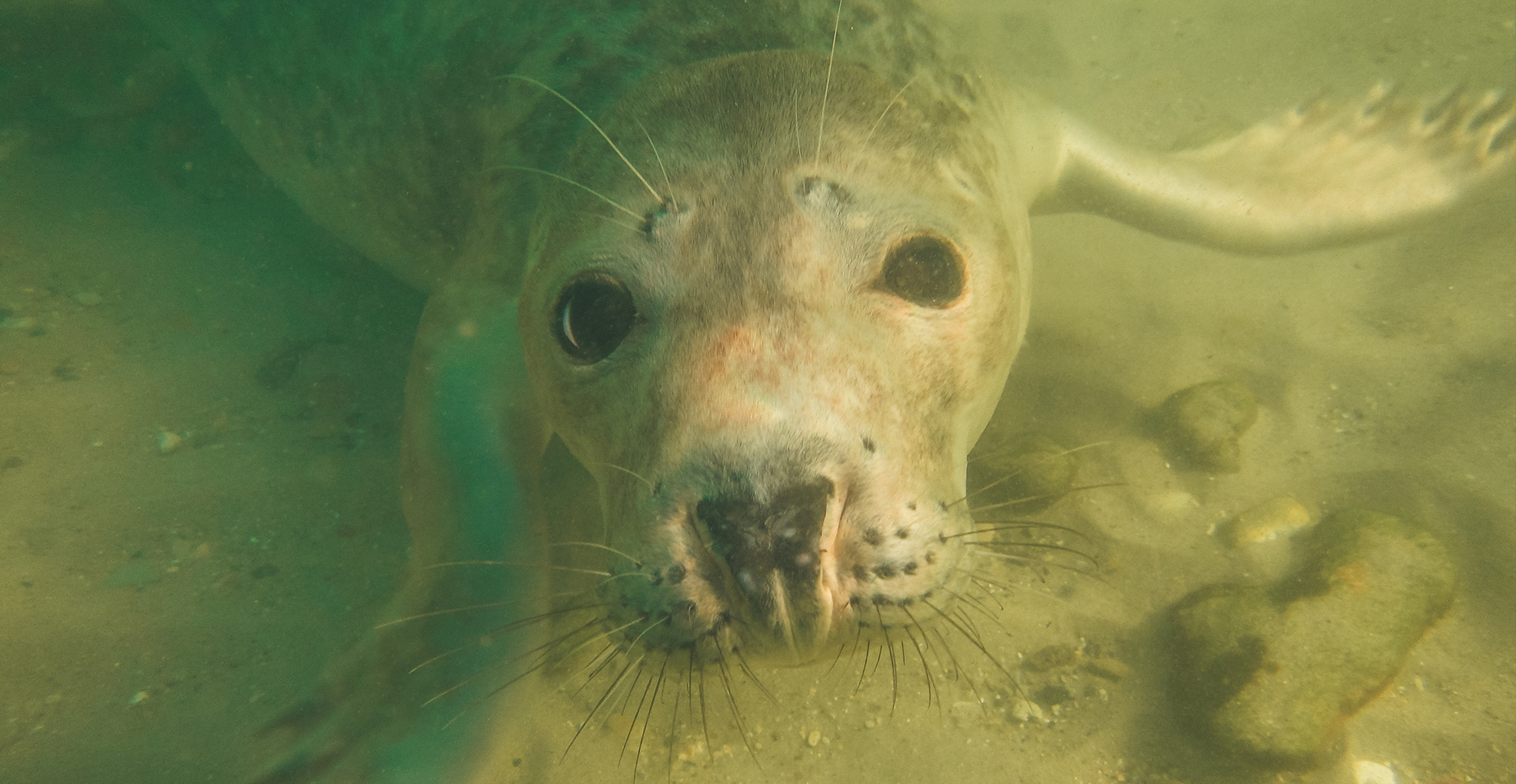
See ya' Honey!
Which experiences have you already made with wild and free animals? Which animals would you like to see in their natural habitat? How far would you travel for your dreams? Do you have any questions or requests to this Wildlife adventure? Write your story or comment below. You can also send me a message to info@wildsweetwild.com or using the Contact Form.
Have fun and take care, Wildlife lovers!

